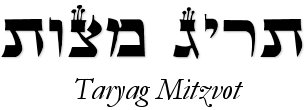"He is searching not for a faith in all its singularity and otherness, but for religious culture."
Rav Yosef Soloveichik in the Lonely Man of Faith
Rav Soloveichik once said that rabbis and teachers had managed to give Shabbos over to their congregants and students, but had not succeeded in giving over Erev Shabbos. They had managed to give over the rules of Shabbos, but were unable to convey its spirit and purpose. In thinking of the Modern Orthodoxy of today, I would paraphrase these words and say that we have been succeeded in conveying the religion of Adam I to the next generation, but have failed in giving over the faith of Adam II.
An essay was recently written which suggested that intermarriage is starting to spread to the MO world. While I think the claim of the writer is mistaken, and certainly disagree with the possibility that the intermarriage rate in our community is 10%, I do not disagree that we are increasingly facing the failure of our community to produce a next generation who are meaningfully engaged with Judaism as a religion.
In Lonely Man of Faith, Rav Soloveichik famously speaks of Adam I and Adam II. In discussing the approach of the former towards religion, the Rav speaks of a person who is interested in what religion offers him. He likes the community aspect, and the connection to tradition and customs. He might heartily agree that “the family that prays together, stays together”. Adam II on the other hand sees Judaism not just for what it adds to his life, but also as something which connects him to Ratzon HaShem. Instead of asking what he gets from being religious, he looks at what is asked of him. He is searching for a faith. It is my strong contention that Modern Orthodoxy of today is largely a community of Adam I, and only rarely a community of Adam II.
If Judaism is nothing more than a system which is supposed to produce happiness and meaning, than how can we be surprised when our children decide that what made us happy is not what leads to their happiness? Why shouldn’t they move towards a more egalitarian approach to religion, or even more towards taking from religion only that which works? If we move entirely away from the language of commandedness, to one of choice, why should we be surprised when our children, in fact, choose?
We’ve somehow arrived at a largely bifurcated educational system where we either emphasize text learning or a more fun approach that is more about finding meaning. What both of these approaches lack is the thick religious experience which is more commonly found in the charedi world. We, and by we, I mean our homes, shuls, communities, and schools are not giving over a religious experience which reaches our kids in their kishkes. We’ve got minyan three times a day, daf yomi, kosher sushi, and sleepaway camps, but do we have a relationship with God. We are frum, but are we religious?
If I’m honest, I’m not sure if we as a community really want more than what we have right now, but if we do, it is going to take more than changing school curricula. Even if our schools, and Israel yeshivot and seminaries can light the spark in our children, in which community are our children supposed to land? With all the hand wringing that exists over kids “moving to the right” (a phrase that needs to be unpacked), why would we expect our children who have discovered the deep meaning of Judaism to stay in our community if we are unable, or even worse, uninterested in producing a community that is more connected to God? If our daughter has discovered the joy and meaning of davening, why should she attend a shul where talking during davening is the norm. If our son loves singing slow plaintive zemiros, will he enjoy a Shabbos meal where the talk mainly revolves around politics and pop-culture?
If we are unable to give over Shabbos and Erev Shabbos, our kids will either look for a community that does, or walk away from a neutered version of Shabbos which offers a nice family meal and some time away from technology, but little more. Those benefits can be found outside of our community, and yes, outside of our religion. If our kids are to stay, we need to offer them something deep and real. If we don’t, can’t, or won’t, we can’t complain if they take our decision seriously, and make their life choices accordingly.







